INTRODUCTION TO GROUPS
Definitions
A group is defined as two or more individuals , interacting and interdependent who have come together to achieve particular objectives
Groups are classified into two categories
- Formal groups
- Informal groups
Formal groups
Formal groups are those created to fulfill specific goals and /or carry out specific tasks. They usually have some official status bestowed on them , either by society or community at large /or organization which created them .They often have definite
structures with laid down rules, group processes and formal roles. Examples of such groups are; a trade union branch, departmental work group, local political party, parent-teacher association, branch of green peace, football supporters club, ex-college /school societies e.t.c
Informal groups
Informal groups are those which are created by individual members for the purpose of sharing a common interest and or/ serving their common needs .These groups emerge from the interactions of individuals ,often within formal groups and sometimes having all
the same members. They are likely to be for less structured. Examples of such groups are; family , friends ,colleagues who go out for a drink together ,people who jog together every morning ,an art class, the disgruntled passengers from a train complaining to a station manager. Not all groups are clearly formal or informal, but there are degrees of formality and /or informality.
OTHER CHARACTERISTICS OF GROUPS
NORMS
All groups have a set of rules governing appropriate behavior, opinions and attitudes. The expected behavior are called norms and have purpose of exerting tremendous power over members. .
- Purpose of norms; these norms develop to influence the way in which group will achieve its goals, e.g. standards of quality , amounts of work to be done e.t.c
- Maintenance Norms develop within the group in order to keep it together. They include particular forms of social interaction (style of speaking , games played between each other, topic of conversation ) and the groups rituals such as; having lunch together .These defines the group .
- Relationship norms develop to establish common ways of treating different people .These include attitudes and behavior to individuals, particularly management or to other groups.
Acquiring Norms
The process of acquiring norms is known as “socialization “ and it’s a process embarked on from the earliest days of childhood and continues throughout the life as one encounter’s new and different environments.
Conformity
This is adjusting one’s behavior to align with the norms of the group. These pressures derive primarily from the “sanctions” available to groups
Sanctions may be positive or negative
- Positive sanctions constitute rewards for appropriate behavior and include, approval and recognition
- Negative sanction constitutes punishment for inappropriate behaviour that includes rejection and disapproval.
Deviance
This is voluntary behaviour that violates significant organizational norms and in doing so, it threatens the well being of organization or it members. Disassociation is caused by a failure to internalize the group norms and this can arise from a number of
factors including ;
- Personality disorders.
- Conflict with other behaviour and norms derived from membership of other groups.
- Dissatisfaction with the appropriateness of the norms in relation to the achievements of the group’s goals.
ROLES
A role is a set of expected behavior patterns attributed to someone occupying a given position in a social unit . Roles exist in nearly all social situations and particularly in groups. In formal groups these roles will be officially recognized e.g. chairperson , secretary ,treasurer .These terms also apply to jobs which is a set of activities which the position holder is required to undertake .
Anthropologist Robert Linton suggested five kinds of social systems giving rise to roles.
- Age /sex grouping, e.g. man ,young women
- Family, household groupings e.g. mother, grandfather ,married women
- Prestige /status groupings e.g. customers , chairperson , leader ,mayor
- Occupational groupings e.g. cleaner ,clerk , administrator , manager
- Friendship and common interest groupings- e.g. friend, club member, competitor.
There are a number of ways or categorizing roles in group in terms of the contributions that an individual can make to the group;
Certainty
Roles provide a source of stability and certainty in social situations knowing the roles of people in a given situation helps in understand the kinds of behavior to express and how to behave ourselves.
Role sets
Individual hold a variety of roles in different situations at different times .Here people hold a number of permanent roles in the various groups to which they belong e.g. father , manager of work group , tutor , trade union member, badminton club member ,
secretary of local labour party bank .
Role problems
There are three classes of problems arising from roles;
- Role conflict is where there is difference between the expectations that others have of role as in the role , say of a head teacher who has to deal with a number of difference expectations of his /her position from teachers ,pupils , parents , governors and local authority .
- Role ambiguity is where there is inconsistency in the expectation of the role rather than conflicting expectations e.g. in the situation of a manager’s autonomy and responsibility for certain area’s of work being sometimes represented and at other times being undermined by more senior mangers.
- Roles and change is where individuals are resistant to changing roles , fearing the uncertainty and frustration that this can cause .This applies both to the holder of a role to those around him/her for example the changed role of women in society can be source of difficulty for both women and men .
- Role and status
Status is a person’s standing, rank or position. Status within the group often matters deeply to each member. The individual employee gains status in various ways for example: - Technical competence e.g. “the best fitter in the shop”
- General knowledge e.g. “Chris will be bound to know”
- The court jester e.g.“ cheer us all up”
GROUP COHESIONS
Group cohesion is the degree to which the group stick together .There are a number of measures of this, including its attractiveness to members, such that they want to stay in it and the extent of interpersonal relationships and interdependence in pursuit of goals .
Factors affecting the groups
- Homogeneity
The most important of these determinants is the extent to which members share similar attitudes and values .This conditions the degree to which members will become involved and communicate , understand and identify with each other . - Interaction
The amount of interaction between members can also be determined .A high degree of interaction , which is common in work groups , families and campaigning groups at a particular times ,can help to promote similar attitudes and values. - Goals
The success of a group in attaining its goals is likely to influence group cohesion. It is likely to endanger positive feelings towards the group, in terms of a facilitating the individuals own goals , his /her contribution to the whole and in belonging to and
being identified by outsiders with a successful group. - External threatens
External threatens to the group can create bonding between members in a sharing of protective feelings .These can arise from competition of a feeling of having the groups attitude and values or even existence, attacked by others . - Size
Small groups facilitate interaction and increase the possibility of shared attitudes and values .Conversely groups grow in size, become more differentiated and they attract people with differing goals and can therefore lose a degree of cohesion.
GROUP DEVELOPMENT
New groups are constantly being formed in all walks of life .These may be formal units, committees working parties, project teams e.t.c. To deal with the new development or innovations or arising from a reorganization of existing work patterns. They may also be informal group based around new friendships and interest.
Stage 1 Forming
The first stage of group development is concerned with finding out the nature of situation with which the group is faced and what forms of behavior and interaction are appropriate. Members will test out attitude and behavior to establish their acceptability as ground rules for accomplishing the task and getting along with other members. Competing powerful personalities can lend to problems in early development explorations of what is acceptable within the group.
Stage 2 Storming
Leading on from the forming stage in which certain ground rules are explored , it is likely that there will be a stage of conflict and disagreement as methods of operations and patterns of behavior start to be firmed up .This where different opinions and styles emerge with competing sub-groups, challenges for leadership , rebellions against control and resistance to the demands of meeting task requirements. A degree of compromise is necessary here in order to allow consensus to emerge.
Stage 3 Norming
As resistance is overcome and conflicts patched up, groups move into the norming stage whereby they establish norms of attitudes and behavior which the mutually accepted for the task performance and interaction .Individual members begin the process of internalizing those norms and identifying with group ,building group cohesion. Members roles start to be clarified and accepted at this stage .The role of leader should be clearly established. the establishment of consensus brings recognition of the value and different potential contributions of individuals and this results to cooperation and mutual support from group work.
Stage 4 Performing
This is the final stage in development and it represents the position where the group energy is now available for effective work, completing task and maintaining the group. The established norms now support the goals of the group and roles becomes functional ,thus allowing constructive work in relation to tasks .
PATTERNS OF GROUP INTERACTION AND COMMUNICATION
The way in which individual members interact and communicate within groups can have important consequences for the way in which tasks are performed and also for the satisfaction of individual group members.
The wheel
In this interaction all communication goes through the centre. This pattern is common in situation where there is little interaction between group members and there is reliance on central decision making .The wheel works very well in providing quick answers to simple questions .
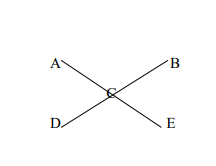
The chain
In this pattern, no single member can interact or communicate with all the others. Although the line of information and the process can be slow. These chain is to be found in groups which are generally only concerned with transmitting messages and are
geographically dispersed.
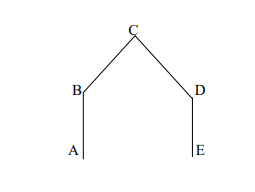 Circle
Circle
The linking together of the ends together of the ends of chain provides the opportunity for each member to interact with two other members directly . This gives a higher level of satisfaction for all members and in a common pattern in many informal situations, such as discussion around the tables. It can also be effective for transmitting messages although it suffers from the same problems as the chain in being slow and prone to misinterpretations
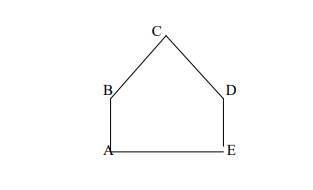
The Y
This pattern combines elements of the wheel and the chain in that it focuses on C as the central contract but does not allow for interaction and communication among members in the different branches.
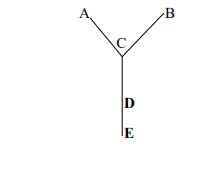
The Webs
In the web, each person are communicates freely with every other individual within the group. This is the most common pattern of informal interaction and is often found in formal interaction and communication such as within small teams
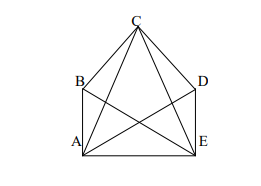
GROUP IN THE ORGANIZATIONS
Individuals are employed by organization but in the work situation individuals invariably work together in groups. A variety of factors determine the behavior of groups and how successful they are .They include;
- Size
The sizes of the group will affect how the group works together and tasks completed. - Leadership /management style
It can affect the performance of the group -It involves the organization and directions’ of the group to achieve its goals . - Cohesiveness
If the group is not cohesive it will tend to be ineffective. - Motivation of group members
The commitment of members to the goals and tasks of the group are a key determinant of successful performance. - Norms of groups
This includes belief systems, attitudes and values of the group, that influence behavior. - Group /team roles
Effective groups need members to carry out a variety of roles in order that goals and tasks of group many be achieved . - The environment
The work environment will have a direct bearing on the group and its performance. - The group task
This includes the task that groups are asked to complete , how important they are and how urgent and how the results help the company achieve its objectives.
FUNCTIONS OF GROUPS IN ORGANIZATION
- Distribution and control of work
This is bringing together and controlling teams of peoples with certain talents and abilities. - Delegation of work
Organization authority needs to be delegated to leaders of work groups. - Spread of information
Groups disseminate information better than individuals. - Uniting the organization in pursuit of its goals
Organization can use work groups as a means of gaining the support of workers for organizations goals. - Analyzing and solving problems
In order to solve problems and make policy, the organization can use high level work groups made up of people with a wide range of talents. - Conflict and resolution
The organization cannot resolve conflicts of its employees at an individual level, because in large organizations there may be too many conflicts hence its better done in groups.
GROUPS AND CONFLICT
Conflicts within between groups are quite common. All conflict has potential to be damaging and there is need to be some constructive effort to limit it so that destructive impact is minimized.
Strategies for handling conflict
- Avoidance is ignoring or suppressing the problem
- Accommodation is allowing the other party to win and have his/her /their own way
- Competition is battling the conflict out in an attempt to win (with the risk that you may lose).
- Compromise is seeking a middle way by bargaining with both parties, giving up certain desired outcome to enhance satisfaction of others.
- Collaboration is seeking the satisfy the desired outcome for both parties, often by changing the situation itself .
